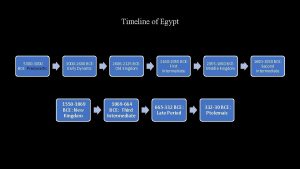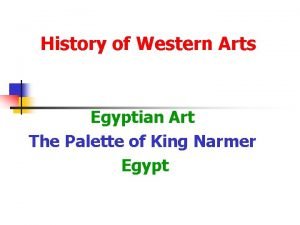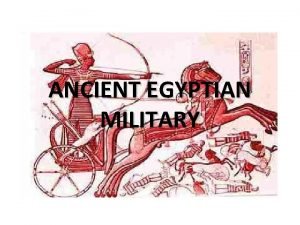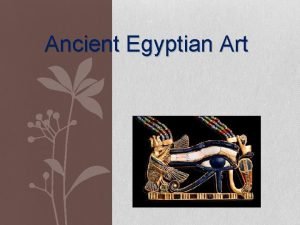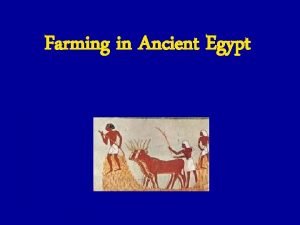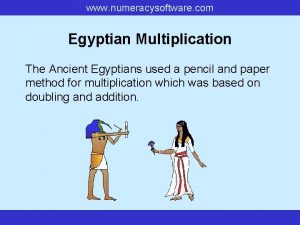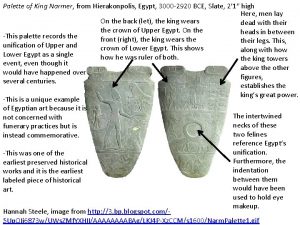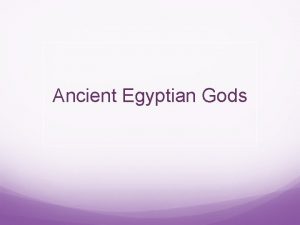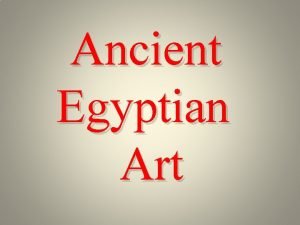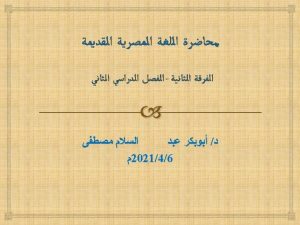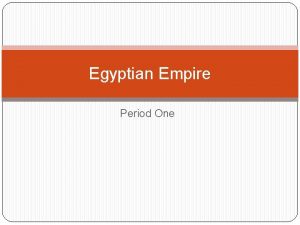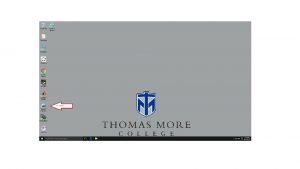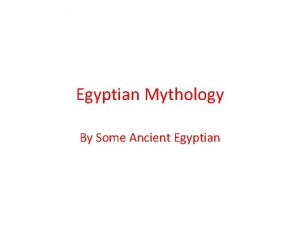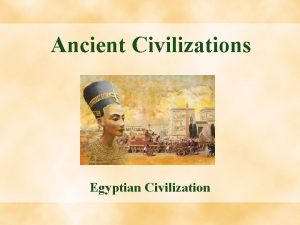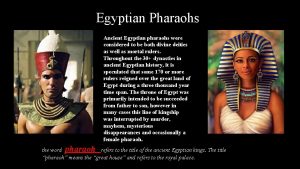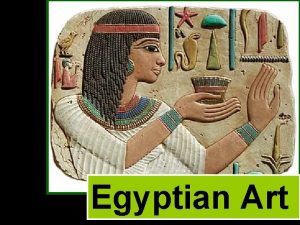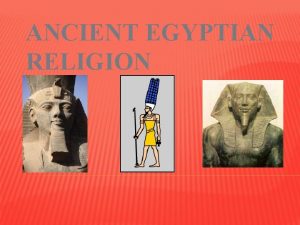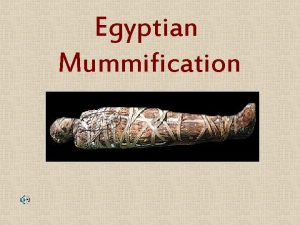ANCIENT EGYPTIAN MILITARY Palette of Narmer This picture























- Slides: 23

ANCIENT EGYPTIAN MILITARY

Palette of Narmer This picture shows and early depiction of warfare. What do you see?


• Narmer strikes down a foe. Many Egyptologists have been tempted to interpret this scene as the conquest of Lower Egypt by Narmer.

• Two dead enemies, symbolising conquered towns, are represented underneath Narmer's feet

• Narmer inspects a heap of beheaded corpses, likely to represent slain enemies after the battle.

The Basics • Military was formed by Nebhepethre Mentuhotep I • Soldiers were chosen by the governor of the territory • Men from the upper class became charioteers

Military Men • During the early times, young men didn’t fear about being drafted into the army. • Changed during the New Kingdom -also became a more prestigious position • Once recruited, reported to school of discipline for training

Military Men • Members of the military were well taken care of: *officers received considerable booty after a successful campaign *Brave men received land grants and slaves *Soldiers were provided land tax free *Both officers and soldiers were recognized for their valor

Clothing • Recruits during training wore a short kilt (loin cloth) • Old Kingdom-triangular flaps in the front around their waste, ribbon like sash around their necks • Middle Kingdom- shaggy edged kilts or triangular flaps. Long black aprons with straps across their chests and backs. • New Kingdom- Shirts and short kilts • Metal armor was not worn

Egyptian Weaponry • Archaic Times: *spears, daggers, clubs, cudgels, & throwing sticks • Old Kingdom: *mace, shields, bow and arrow & axe • New Kingdom: *soldiers begin using scimitars and body armor

Egyptian Warfare Kamose realized the advantages of incorporating the chariot into the Egyptian Army Egyptians improved on the 4 wheeled chariots of the Sumerians. Egyptian Chariots where light two wheeled vehicles Manned by a driver and a fighter armed with a bow and a spear.

Pharaohs & Generals • Thutmose III: *Greatest warrior King of ancient Egypt *Bold and Reckless in battle-Battle of Megiddo *Expanded Egypt Northward to the Euphrates river *Made Egypt the richest nation


Egyptian Navy

Pharaohs & Generals • Ramses II: *controlled an army of 20, 000 soldiers *Split into 4 divisions 1 -Amun (Lord of all Gods) 2 -Ra (the Sun God) 3 -Set (God of War & Love) 4 -Ptah (God of Craftsmen) *Divisions= 5, 000 each *Division had 20 companies (250 men) *Companies divided into 5 platoons (50 men)

Pharaohs & Generals • Ramses II: *Fought land Sea Battles *Saved Egypt from the Mediterranean Island people called the Sea People *Most famous battle was against Hittites.

The Hittite Chariot: Two wheeled but considerably heaver than the Egyptian Chariot It carried a crew of three: A driver Shield bearer And an archer Hittite battle tactics were focused on the offensive use of the chariot with infantry in support.

Hittites continued • The Hittite Empire extended over most of Anatolia, parts of Syria and Canaan • by 1300 BC the Hittites were bordering the Egyptian sphere of influence • This led to the Battle of Qadesh in 1274 BC.

Battle of Qadesh • Object: Control of Syria • Numbers: – Hittites est. 40, 000 – Egyptians est. 20, 000 • Result: Both sides were inflicted badly so a non-aggression pact was signed

End of Empire • Egyptian military started small and simple • Grew into one of the most powerful armies in the ancient world • Egyptian Empire ended with the onslaught of the Greek Empire in the late period. • Ruled by Greeks for 300 years when Rome took it over


 Narmer palette meaning
Narmer palette meaning Narmer palette meaning
Narmer palette meaning Palette of king narmer
Palette of king narmer Byzantine floral history
Byzantine floral history Kamose
Kamose Painted chest from the tomb of tutankhamun
Painted chest from the tomb of tutankhamun Who were the egyptians
Who were the egyptians Ancient egyptian fairy tales
Ancient egyptian fairy tales What crops did the ancient egyptian farmers grow
What crops did the ancient egyptian farmers grow Ancient egyptian slaves
Ancient egyptian slaves Ancient roman toothbrush
Ancient roman toothbrush Ancient egyptian clothing for special occasions
Ancient egyptian clothing for special occasions Ancient egyptian technology
Ancient egyptian technology Ancient egypt social pyramid
Ancient egypt social pyramid Egyptian multiplication
Egyptian multiplication Ancient egypt transportation
Ancient egypt transportation What did khufu accomplish
What did khufu accomplish Ancient egyptian interior design
Ancient egyptian interior design Ancient egyptian commoner clothing
Ancient egyptian commoner clothing English georgian period floral design
English georgian period floral design Ancient egyptian beliefs
Ancient egyptian beliefs Egyptian art frontalism
Egyptian art frontalism Ancient ways of communication
Ancient ways of communication Ancient india vs ancient china
Ancient india vs ancient china
